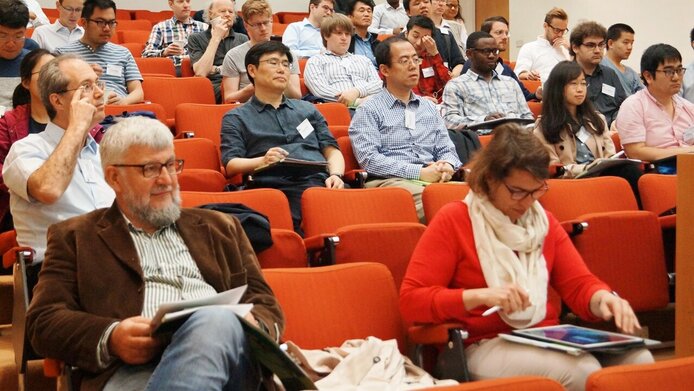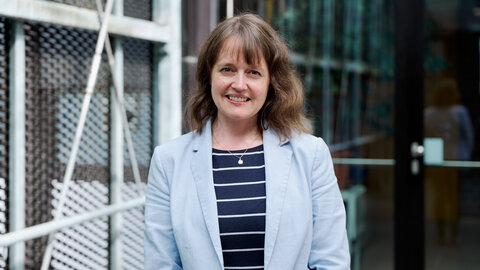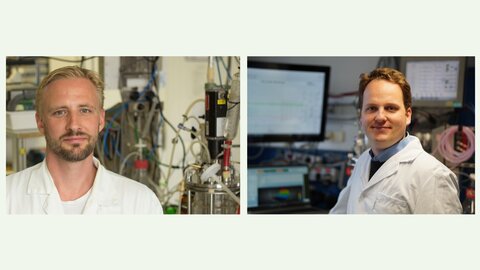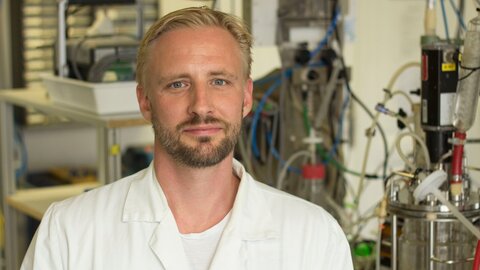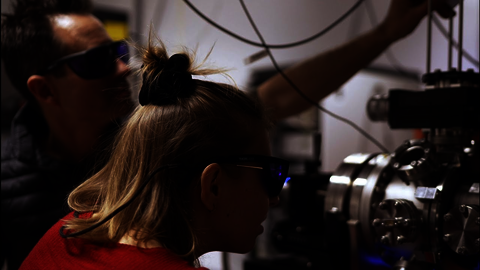“I don’t fit the mould”

Whether we are talking about radioactive decay, the development of animal populations or the flow of water in pipes: differential equations are the most important tool of natural science in order to describe the behaviour of certain properties of a system over time. If you know how a factor changes, you can describe its value in the future with exactitude. – Or so goes the theory.
Integrating coincidence
In mathematical reality – as in daily life – there are unforeseen events and disruptions that can undermine any planning and affect or sometimes even overturn results. “Even minute disturbances can change the system’s behaviour so radically that you end up with completely different results. Therefore it makes sense to integrate an element of coincidence in the equations from the start”, says Erika Hausenblas. This gives rise to “stochastic partial differential equations”, the research focus of this Professor of Applied Mathematics at the Leoben University of Mining Sciences (Montanuniversität Leoben).
No exact solution
“This is a relatively young field”, notes Erika Hausenblas in her interview with scilog. The first book on these equations was published in 1993. The aim is not to eliminate coincidence, but to integrate it in the computations and describe it. These equations do not have exact solutions, but give a probability distribution. This is also the reason, the scientist explains, why it will take a while until these methods are fully accepted in the engineering sciences: “The engineers I teach do not like coincidence, because it means they have to surrender control.” In financial mathematics, however, extensive use is already made of these equations according to Hausenblas.
Current project
Her ongoing FWF-funded research project bears the title Numerical Analysis of Non-Linear Filtering with Levy Noise. Levy noise is the name given to coincidental processes that can be non-linear or irregular, such as gusts of wind. A very important field of application of non-linear filtering is positioning and navigation. A ship navigating the ocean, for instance, derives its position from GPS signals. But these signals may be distorted or incomplete because of a badly working receiving device or because of blind spots in radio reception. The ship is heading for its home port, but deviates slightly because of waves and ocean currents. Hence the position of the ship needs to be recalculated by means of the available data. In navigation, other important factors besides the position are speed, acceleration, attitude and heading. The task consists of estimating the position of the ship as accurately as possible.
A chip off the block
While it was more or less coincidence that took the mathematician to her research field of stochastic differential equations, it had always been very clear - and encouraged by her family background - that she would end up in science. Her father was an electrical engineer and her mother a physicist. Even back in school Hausenblas already opted for advanced courses in physics and mathematics. And she learned early on to move in a male-dominated environment. “In mathematics I was the only girl among 14 boys, and in physics class there were only two of us”, recalls the 52-year-old scientist. After graduating from university she first started work at Siemens in Munich – as the only woman among many men.
In a male-dominated environment
Since 2010, Erika Hausenblas has been a Full Professor of Applied Mathematics at Montanuniversität Leoben in Styria, again confronting an extremely male-dominated environment. She is one of only two women in a faculty of 44 professors. The proportion of women among students is also at a low level, but differs depending on courses of study. “In mechanical engineering the share stands at eight to ten percent, in areas such as industrial logistics it is slightly higher at 20 to 30, and even a little higher than that in recycling”, reports Hausenblas quoting from statistics.
“My social circle is male”
The researcher is convinced that she was strongly influenced by always working in male-dominated jobs. Not only because it still happens that people mistake her for a secretary, but she herself also sometimes feels out of place - in predominantly female gatherings, that is. “My social circle is male”, she says, “in female gatherings I often put my foot in it: body language, demeanour, things you say – in such instances I realize that I don’t really fit in.”
Sensitive to inequalities
This background also made the mathematician sensitive to inequality in how people are treated. She recalls a female student of mechanical engineering whom she particularly noticed because of her excellent performance. When she mentioned her to a male colleague he replied: “Yes, she’s certainly diligent.” “When a girl is good she is ‘diligent’. No-one thinks, oh, she’s good, let’s give her a post. That’s still the mindset”, Hausenblas notes with annoyance. Another example comes from her children’s school. The teacher considered a spelling weakness to be just a quirk when it related to her son, but saw it as a deficit in her daughter. “Maybe someone who fits the woman's mould better would not notice these things so much. But I find them very noticeable!”, says Hausenblas.
Change is slow
The mathematician believes that a change in mindsets will probably still take a long time. But she notes that her fifteen-year-old daughter already has different role models from most of her fellow pupils. In a recent chat with her about possible careers, the young girl, who also takes an interest in the sciences, mentioned primarily fields such as information science, electrical engineering and physics, and not typically female occupations.
Outside the box
Her ongoing research project is just one of several that Hausenblas has successfully proposed to the FWF in past years. She is convinced that her career would not have been possible without these grants. “At the FWF, what counts are clear criteria well beyond networking”, Hausenblas says. “Here you have a chance to get funding even if you don’t fit the mould.”
In 2010, Erika Hausenblas was appointed Full Professor of Applied Mathematics at the Montanuniversität Leoben (Leoben University of Mining Sciences). Her special research interests are stochastic partial differential equations, a relatively young field of research. She is a recipient of the Christian-Doppler Award and was awarded an APART fellowship by the Austrian Academy of Sciences.
